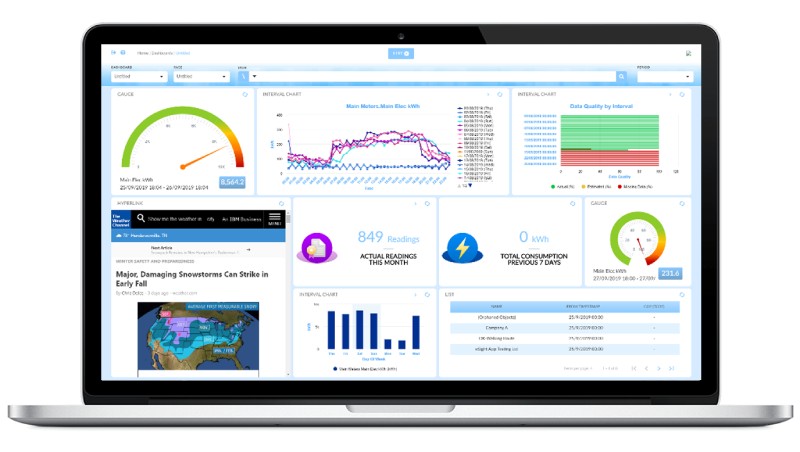The Role of Energy Monitoring Dashboards: Empowering Sustainability

Environmental concerns are at the forefront of global discussions, businesses and individuals alike are increasingly focused on sustainability and energy efficiency. One of the key tools driving this movement is the Energy Monitoring Dashboard. This innovative technology provides real-time insights into energy consumption patterns, enabling organizations to identify inefficiencies, reduce waste, and make informed decisions to optimize their energy usage.
Understanding Energy Monitoring Dashboards
Energy Monitoring Dashboards are digital platforms that collect, analyze, and visualize data related to energy consumption in real-time. They aggregate data from various sources such as smart meters, sensors, and building management systems, allowing users to track energy usage across different facilities, equipment, and processes. These dashboards provide interactive visualizations, customizable reports, and alerts to help users monitor energy consumption trends, identify anomalies, and implement energy-saving measures.
Benefits of Energy Monitoring Dashboards
-
Increased Visibility: Energy Monitoring Dashboards provide users with real-time visibility into energy consumption patterns across their operations. By visualizing energy usage data in a clear and concise manner, organizations can identify areas of high consumption, pinpoint energy-intensive processes, and prioritize energy-saving initiatives.
-
Cost Savings: By identifying inefficiencies and reducing energy waste, organizations can significantly reduce their energy bills. Energy Monitoring Dashboards enable users to track energy usage in real-time, set energy consumption targets, and monitor progress towards achieving those targets. This proactive approach to energy management can result in substantial cost savings over time.
-
Environmental Impact: Energy Monitoring Dashboards play a crucial role in helping organizations reduce their environmental footprint. By optimizing energy usage and reducing greenhouse gas emissions, businesses can contribute to mitigating climate change and promoting environmental sustainability.
-
Operational Efficiency: By analyzing energy consumption dashboard, organizations can identify opportunities to optimize operational processes and equipment. Energy Monitoring Dashboards enable users to track energy usage trends, identify inefficiencies, and implement measures to improve energy efficiency and productivity.
-
Compliance and Reporting: Energy Monitoring Dashboards help organizations comply with regulatory requirements and reporting standards related to energy consumption. By providing accurate and timely data on energy usage, organizations can demonstrate their commitment to sustainability and environmental stewardship.
Key Features of Energy Monitoring Dashboards
-
Real-time Data Visualization: Energy Monitoring Dashboards provide interactive visualizations of energy consumption data, allowing users to track usage trends, compare performance across different facilities, and identify outliers or anomalies.
-
Customizable Reports and Alerts: Users can customize reports and set up alerts to notify them of unusual energy consumption patterns or deviations from predefined targets. This proactive approach to energy management enables organizations to respond quickly to potential issues and implement corrective actions.
-
Integration with IoT Devices: Energy Monitoring Dashboards can integrate with Internet of Things (IoT) devices such as smart meters, sensors, and building automation systems to collect real-time data on energy usage. This seamless integration allows for more accurate and granular monitoring of energy consumption across various systems and equipment.
-
Energy Benchmarking: Energy Monitoring Dashboards enable organizations to benchmark their energy performance against industry standards and best practices. By comparing energy usage metrics with similar organizations or facilities, businesses can identify areas for improvement and set realistic targets for energy savings.
-
Predictive Analytics: Some Energy Monitoring Dashboards incorporate predictive analytics capabilities to forecast future energy consumption trends based on historical data and external factors such as weather patterns or production schedules. This allows organizations to anticipate energy demand and proactively adjust their operations to optimize energy usage.
Case Study: Energy Monitoring Dashboard Implementation
A multinational corporation with multiple manufacturing facilities implemented an Energy Dashboard across its operations to track and manage energy consumption. By visualizing energy usage data in real-time, the company was able to identify opportunities to optimize equipment performance, reduce energy waste, and achieve significant cost savings. Through ongoing monitoring and analysis, the company was able to continuously improve its energy efficiency and meet its sustainability goals.
Conclusion
Energy Monitoring Dashboards are powerful tools that empower organizations to optimize energy usage, reduce costs, and minimize environmental impact. By providing real-time visibility into energy consumption patterns, enabling proactive energy management, and facilitating data-driven decision-making, these dashboards play a crucial role in promoting sustainability and driving operational efficiency. As businesses and individuals increasingly prioritize sustainability and energy efficiency, Energy Monitoring Dashboards will continue to play a vital role in shaping the future of energy management and environmental stewardship.

